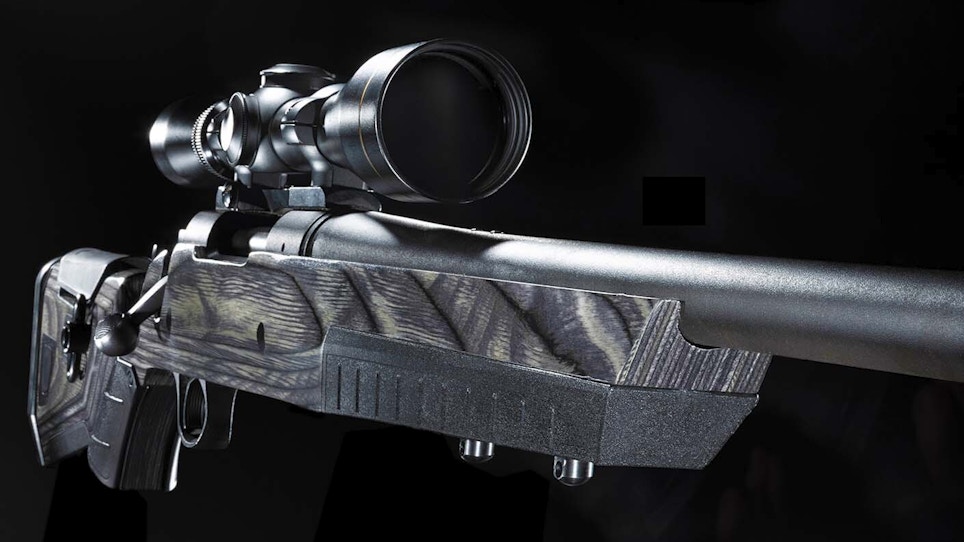Remington introduced its Model 700 in 1962 and sold more than 5 million of the bolt-action rifles before production ground to a halt during bankruptcy. New owners have assumed control at the legendary Ilion, New York, plant and are in the process of resurrecting America’s oldest gunmaker. Famed 870 shotguns are already coming out of the factory, but new 700s have yet to appear.
In the meantime, there’s no shortage of hand-me-downs, heirlooms and once highly prized 700s confined to gun safes while their fashionably new cellmates get regular exercise at firing lines. It’s a shame, since the U.S. Army and U.S. Marine Corps acknowledged the performance and reliability when they drafted the platform into service as their M24 and M40 sniper rifles, respectively.
Your best customers probably have at least one they consider a tack driver collecting dust. It may lack modern refinements and wear the scars of abuse, but guns that print tiny groups are hard to forget, much less sell or trade.
Aftermarket stocks for 700s often send owners strolling down memory lane, and there are plenty available. With models for both long- and short-action cartridges, in wood or aluminum and wearing a variety of modern features, there’s something for everyone. Even if the budget isn’t there to inventory versions with an aircraft-grade aluminum chassis, one or two budget options on display are a great conversation starter. Then mention the others you can order along with free installation.
The stock used to illustrate this article — a Boyd’s Hardwood Gunstocks At-One version — changed the milquetoast polymer version worn by many 700 BDLs to a length-of-pull and cheek-rest adjustable wood model. It’s already scheduled to reappear at the firing line, thanks to the improved versatility and looks.
Installation is fast and easy. Performing the task also provides a retailer the opportunity to gently suggest the owner consider an upgrade or two down the line.
Our emphasis on safety probably sounds like a broken record by now, but the popularity of “quiet quitting” and job swapping demands reinforcement. We apologize, but dutifully begin there. Keep the rifle pointed in a safe direction and engage the safety — if it isn’t already in that position. Open the bolt, remove any cartridges in the magazine well and check the chamber is empty. Use a light if necessary and double check there is no ammunition in the gun. Place any ammo you’ve recovered away from your work area. It’s a good idea to remove the bolt, too. It adds another layer of safety and reduces any temptation to use it for leverage when freeing the stock.
Turn the rifle to upside down. Use a padded vise to protect mounted optics or cushion as necessary.
The model seen here is a 700 BDL. It has a blind magazine — no hinged plate at the bottom for loading cartridges into the internal magazine—and the stock anchors with three bolts. The ADL version, which can reload from below, has only two.
In both cases, remove the forwardmost bolt on the bottom of the stock. Then, at the trigger guard, remove the bolt(s) and set aside. The ADL has only one bolt there, but in the BDL’s case, there are two, and they are not the same size. To save time during reassembly, keep them indexed with their proper slots after removal.
Depending on the 700’s age, abuse and neglect, the receiver and barrel may just slide out. Odds are good, though, that you’ll need to apply pressure in a rocking motion, back and forth on the barrel and receiver ends. There are a variety of methods used to work the stock free. Placing your index finger on the barrel and thumb on the stock, and applying pressure laterally — multiple times — is usually enough to wiggle the stock free. Do not pry up using the muzzle end of the barrel for leverage. That could potentially damage the rifle and the recoil lug you’re fighting to separate things.
Once apart, set the now-free magazine spring and elevator aside and give all metal parts a quick rubdown with an oil cloth. Now you’re ready to reassemble, but first make sure the new stock’s holes and recoil lug slot index properly.
Inspect the interior of the new stock for burrs or obstructions that could impede proper seating or put pressure on the barrel one more time. Clean if necessary and reinsert the magazine follower and spring in the receiver.
Finally, mount the stock to the barrel and receiver. Tighten bolts to manufacturer specifications and use thread-locking compound if recommended.
Once done, reinsert the rifle’s bolt, function test cycling and adjust cheekpiece and length of pull, if possible, on the new stock. Now’s the time to remind the owner that a firing-line session to check zero is in order and ask if they have ammo to do so.





